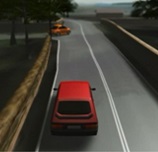 The use of animated evidence in court can confuse and bias a jury, according to new research carried out at Aberystwyth University.
The use of animated evidence in court can confuse and bias a jury, according to new research carried out at Aberystwyth University.
Computer-generated evidence (CGE) is frequently used in courts as a technique with which to demonstrate complex sequences of events, or collate different pieces of evidence into a more coherent picture. Famously used in the trials of Amanda Knox and in presenting evidence against Oscar Pistorious, one of the advantages of CGE is that it allows a number of different viewpoints to be examined in a way which is often not possible with still images. However, research suggests that using CGE may confuse and bias juries, leading to dangerous errors in judgement.
The research by Professor Gareth Norris, a professor of criminology in the university’s Department of Law and Criminology, will be presented at an event as part of the Economic and Social Research Council’s (ESRC) annual Festival of Social Science in November.
Professor Norris examined the extent to which viewing a two-car collision from different angles using computer animation affected people's perceptions of culpability. He found that the viewpoint presented (either overhead, facing or internal) had a direct effect on whom the participants blamed for the collision. In another study he found that the make and colour of a car could bias people's judgement of who was to blame for a car accident, when the accident was presented in the format of a colourful computer generated animation.
Participants watched an animation where one car travelling at 60mph in a 40mph zone swerves to avoid another car which pulls out into the road in front of it. Two different makes of car - a large, powerful off-road vehicle (4×4 Range Rover Sport) and a family oriented people-carrier style Volkswagen Touran are shown alternatively to be each of the two vehicles. The experiment showed that when people viewed the animation in colour as opposed to black and white, they were far more likely to think that the Range Rover was to blame, especially if the Range Rover was red as opposed to beige.
According to Professor Norris these findings mean that court officials should be cautious when using computer animation in courts.
“People are poor physicists and essentially if you have a graphic that shows someone can fly, people will believe they can fly,” said Professor Norris. “At a basic level, jurors and other legal decision makers must be made aware that these exhibits are merely a representation of one potential sequence of events.”
Dr Catherine Williams, co-organiser of the event said: “Using animation in court can be useful, but it can also be extremely dangerous. While it may be quite useful for criminal justice officials to look at, when it is being used by lay people who aren't used to looking at it you have to be extremely careful. Simply manipulating angles or even colours of vehicles change people's perceptions of events.”
Professor Norris added: “Psychology has much to offer the legal system in terms of establishing a range of advice about where and why potential problems might arise. Just as it seems incredible that we would have once put a child witness in a courtroom or introduced relatively unqualified ‘experts’ to offer advice, so it may also be that we allowed sophisticated techniques of persuasion without any real safeguards or guidelines.”
The research is being showcased at Criminology, criminal justice and young people on 5 November. It will allow young people at a local school in Aberystwyth to experience the powers and pitfalls of animated evidence in court cases by using computer generated exhibits of vehicle collisions. It will also consider how decisions about driving affect performance by participating in a driving game while wearing ‘drunk glasses’ or texting before commencing a debate around the issues.